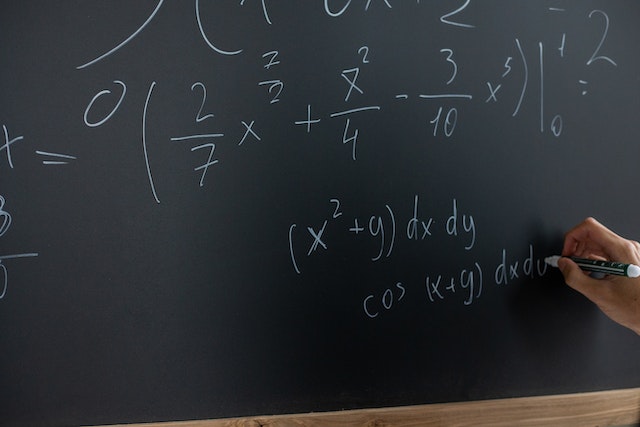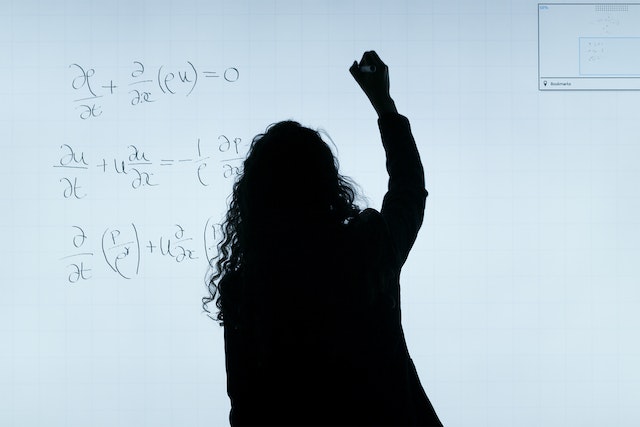Interactive math is a great way to engage students in learning new concepts. It also helps them understand how mathematics can apply to their daily lives.
What Are the Functions and Functions Used in Interactive Math?
For younger learners, there are games that require them to match numbers or count shapes. For older students, there are interactive puzzles that use mathematical functions to solve.
Functions
Functions are important in interactive math, and they help students understand how numbers relate to one another. They are used in a variety of different ways, including in mapping diagrams, tables, and graphs. They can be difficult for students to learn, though, so it’s essential to provide them with practice.
In interactive math, functions can be taught by using games and other forms of interactive content that allow students to use their skills while they’re learning. For example, students can play an interactive game that shows how changing the input value of a function changes the output value. For more interactive math resources and insights, visit Brighterly.
Students can also use a large cardboard box that has input and output slots for students to put numbers in and out of. They can then solve puzzles based on the inputs and outputs from the machine.
To make this activity even more engaging, students can take turns putting their own numbers into the box to send them through the slots. They can do this multiple times until they figure out the rule that determines which number goes in each slot.
This type of learning can be incredibly helpful for students, especially when it comes to complex mathematical concepts. It can help them feel more confident in their understanding of the subject and develop their ability to communicate their knowledge.
A function from set M to set N is a special relation that maps each element of set M with each element in set N. It is a rule that says that for any element of set M there is a unique element of set N such that (a, b) f.
Functions can be used to graph circles, ellipses, lines, and parabolas. They can also be applied to other mathematical problems, such as determining arm length or calculating the average daily temperature in Green Bay, Wisconsin.
Functions are a key part of a wide range of mathematical topics, from algebra to linear equations. They are also used in practical applications, such as engineering and computers. For this reason, it’s important for teachers to make sure their students know how to use them correctly and accurately.
Geometry
Geometry is one of the oldest branches of mathematics, which is primarily concerned with the shapes and sizes of objects, their relative position, and the properties of space. The field of geometry is closely related to arithmetic. A mathematician who specializes in the study of geometry is called a geometer.
The study of geometry is a rigorous and systematic process. It begins with a small set of accepted truths (axioms or postulates) and builds up true statements using a step-by-step proof. These steps are referred to as the axiomatic method and are a hallmark of traditional geometry textbooks.
A common way to teach geometry is through interactive activities that make the concepts accessible and meaningful to students. These activities can range from classic geometry tools like geoboards to newer, digital versions of the same tools.
Among the most popular interactive math activities for teaching geometric concepts are geometric constructions and demonstrations. These tools are especially useful when students need to explore concepts quickly and understand them.
In addition to demonstrating and constructing geometric figures, these programs also provide ways to test the student’s understanding of the subject. For example, Live Geometry is a free CodePlex project that lets users create interactive ruler and compass constructions and experiment with them.
This dynamic software can be used for teaching and learning various mathematical topics, including algebra, trigonometry, geometry, physics, and calculus. The program’s user-friendly interface and powerful features help students learn the principles of geometry more effectively than ever before.
Another important use of geometry in interactive math is the ability to draw and construct 3D models. This allows students to view their designs from any angle and see how they will look from different positions.
The software’s flexibility also makes it a great choice for teachers who want to incorporate the technology into their curriculum. It can be used to create and print maps, charts, diagrams, and other documents.
Many of these online math programs are free to use, which makes them an affordable resource for students and educators. They also offer plenty of other benefits, such as an easy-to-use interface and a variety of ways to test students’ understanding of the material.

Arithmetic
Arithmetic is the branch of mathematics that deals with numbers, and how to use them to solve problems. This includes addition, subtraction, multiplication and division. It also involves fractions, percentages and exponents.
Arithmetic is often referred to as the “basics” of math, and it is one of the most important subjects students will learn. It helps students understand how to use numbers effectively, and how to apply them in everyday life.
Many interactive math games have arithmetic elements in them, and some even include basic algebraic concepts. These types of games are an excellent way to teach students how to use arithmetic, and they can be fun for everyone to play!
This is because they can be played in a variety of ways and have a wide range of applications. For example, students can play games in which they have to match numbers, count shapes or perform simple mathematical functions.
They can also play games that involve solving common mathematical puzzles and riddles. This gives them a clear application of math that is not limited to pencil and paper problem solving, which makes learning more interesting for students and encourages them to enjoy the subject.
Another aspect of arithmetic that is often used in interactive math is the use of calculators. These are tools that allow people to solve problems without the need for a pencil and paper, and they can be very helpful when a person needs to quickly figure out a number or an equation.
In some cases, these tools can be very useful and help students to quickly determine a number or an answer, but it is important for teachers to be aware of the dangers of overemphasizing the use of these devices. They can be confusing for some students and can prevent them from fully understanding the basics of arithmetic.
Other forms of interactive math do not involve the use of any type of electronics or electronic devices. They can be simple board games that involve dice or other devices to generate how a character or token moves each turn, and they can be a great way for people to practice their math skills.
Algebra
Algebra is a generalized version of arithmetic that uses symbols to stand for unknown numbers. It is a major component of higher mathematics, including calculus, trigonometry, and three-dimensional geometry.
The word algebra was first used by French mathematician Francois Viete in the 16th century to describe a system of rules that would allow one to combine letters representing different numbers to form a more general symbol. In the 20th century, algebra has developed further and encompasses areas of mathematics such as group theory, ring theory, and field theory.
Elementary algebra deals with the manipulation of variables (commonly represented by Roman letters) as if they were numbers and is an essential part of all applications of mathematics. Abstract algebra studies the axiomatically defined structures of groups, rings and fields. Linear algebra focuses on the specific properties of linear equations, vector spaces and matrices.
In interactive math, algebra is used in many ways to explain and solve problems related to everyday life. It can be learned through games, interactive activities, and print materials.
For example, there are interactive algebra games where students solve one-step addition and subtraction problems while racing a motorcycle. Or, there are interactive mathematics resources that focus on how DJs use math to produce records.
There are also a few websites that offer online algebra tutors to help students with their algebra homework and tests. Sites like Coursera often provide courses and resources that can be useful. These sites will usually give students a free trial or provide a small fee.
Interactive notebooks are a great way to record a student’s work in algebra and other subjects, especially at the end of an introductory math course like Algebra 1. They can be invaluable for re-reading when a student is struggling or needs a refresher.
Interactive notebooks can also be used to document a student’s learning progress and help them track their improvement over time. They are also very helpful for keeping track of test scores, assignments and other important information. This can be especially beneficial if a student is enrolled in multiple math courses.
